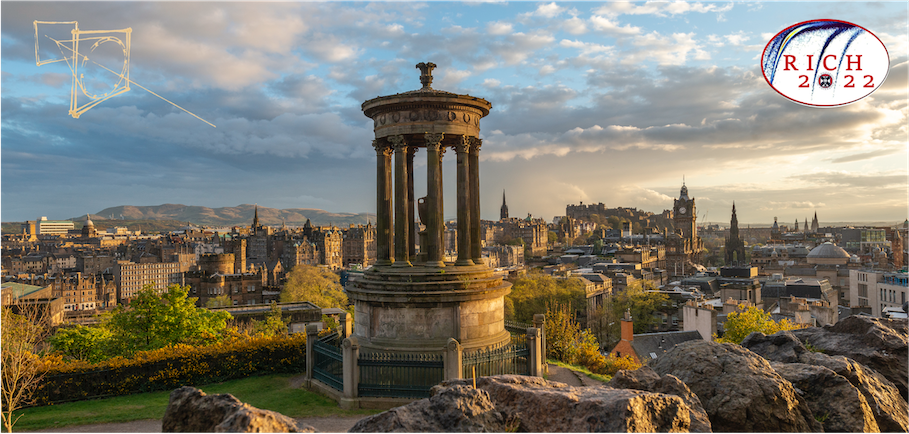Speaker
Description
The Electron-Ion Collider (EIC) is the new large-scale particle accelerator planned in the US and designed to collide polarized electrons with polarized protons and nuclei and investigate the dynamics of quarks and gluons, unlocking the secrets of QCD. The capability to distinguish charged particles over the full momentum range, while working in a strong (about 1T) magnetic field, is required for a general purpose detector at EIC
A prototype of dual Ring Imaging Cherenkov (dRICH), a detector which exploits the Cherenkov light produced in two different mediums, is being developed to discriminate between pions, kaons and protons in the extended momentum range from few GeV/c up to 50 Gev/c, and support electron identification in the EIC hadronic endcap. Particles crossing a layer of aerogel (n ≃ 1.02) and a volume of C2F6 gas (n ≃ 1.00085) with a velocity greater than the light in medium, produce Cherenkov photons which are focalized by two different spherical mirrors onto the same photon detector array. The photon detection area was instrumented either with multi-anode photomultipliers, used as reference, or custom matrices of magnetic-insensitive silicon photomultipliers (SiPMs), cooled at -30 °C to mitigate the dark rate. The combined information of two imaged Cherenkov rings and the particle momentum allow to infer the mass and therefore the type of the crossing particle.
Two test beams were performed at CERN in fall 2021, when a full tracking and imaging system has been commissioned. In this presentation, the prototype and the preliminary results obtained, together with a preview of the future test beams which will occur in fall 2022.
The development of the dRICH prototype is an EIC_NET initiative.
